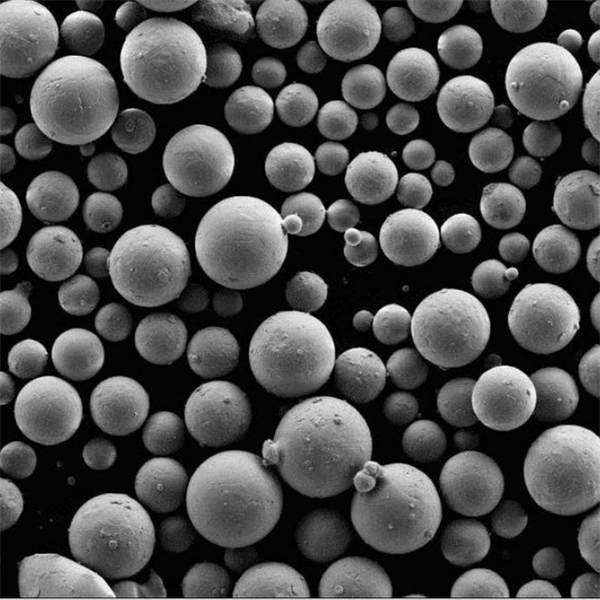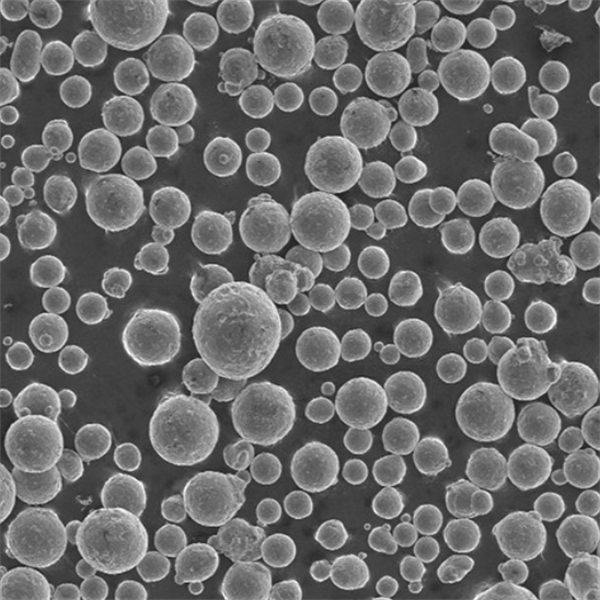Tillverkare av gasatomiserare
Innehållsförteckning
Översikt
Tillverkningsvärlden vimlar av innovationer, och gasatomisering ligger i framkant, särskilt vid produktion av metallpulver. Men vad exakt gör a tillverkare av gasförstörare do? Enkelt uttryckt är dessa tillverkare specialiserade på att skapa metallpulver med hjälp av gasatomisering - en process där smält metall sprutas med högtrycksgas för att producera fina partiklar. Denna metod är kritisk för industrier som kräver högkvalitativa, enhetliga metallpulver. I den här guiden kommer vi att dyka djupt in i detaljerna för gasförstoftare, utforska olika metallpulvermodeller och belysa deras tillämpningar, specifikationer, fördelar och nackdelar.
Förstå gasatomisering
Gasatomisering är en fascinerande process, men det kan låta som en jargong för den oinvigde. Föreställ dig en stråle av smält metall som möter en gasström med hög hastighet. Metallen, som inte kan motstå kraften, sönderdelas till små droppar. När dessa droppar svalnar stelnar de till fina metallpulver. Dessa pulver är centrala i olika applikationer, från additiv tillverkning till flygkomponenter.

Typer av metallpulver som produceras av gasförstörare
Metallpulvermodeller och beskrivningar
| Modell | Sammansättning | Fastigheter | Tillämpningar |
|---|---|---|---|
| AlSi10Mg | Aluminium, kisel, magnesium | Hög hållfasthet, goda termiska egenskaper | Flyg- och rymdindustrin, fordonsindustrin |
| 316L rostfritt stål | Järn, krom, nickel | Korrosionsbeständig, hög duktilitet | Medicinsk utrustning, marina applikationer |
| Ti-6Al-4V | Titan, aluminium, vanadin | Högt förhållande mellan styrka och vikt, biokompatibel | Biomedicinska implantat, flyg |
| Inconel 718 | Nickel, krom, järn | Värme- och korrosionsbeständig, hög draghållfasthet | Gasturbiner, kärnreaktorer |
| Koppar 99.9% | Ren koppar | Utmärkt elektrisk och termisk ledningsförmåga | Elektriska komponenter, värmeväxlare |
| CoCrMo | Kobolt, krom, molybden | Hög slitstyrka, biokompatibel | Tandimplantat, ortopediska implantat |
| FeSiAl | Järn, Silikon, Aluminium | Mjuka magnetiska egenskaper, hög permeabilitet | Elektriska transformatorer, induktorer |
| NiCrMo | Nickel, Krom, Molybden | Hög korrosionsbeständighet, bibehåller styrkan vid höga temperaturer | Kemisk process, olje- och gasindustri |
| Aluminium 6061 | Aluminium, magnesium, kisel | Lätt, hög hållfasthet, bra korrosionsbeständighet | Strukturella komponenter, marina beslag |
| Verktygsstål D2 | Järn, Krom, Kol | Hög hårdhet, slitstyrka | Skärande verktyg, matriser, formar |
Tillämpningar av Gas Atomizer Tillverkare
Olika användningsområden för metallpulver
Metallpulver som produceras av gasförstoftare hittar sin väg in i en myriad av industrier. Här är en närmare titt på några viktiga applikationer:
| Industri | Tillämpning |
|---|---|
| Flyg- och rymdindustrin | Jetmotorkomponenter, strukturella delar |
| Fordon | Lättviktsdelar, motorkomponenter |
| Medicinsk | Implantat, proteser, kirurgiska verktyg |
| Elektronik | Ledande bläck, elektroniska komponenter |
| Olja och gas | Borrverktyg, ventiler och pumpar |
| Additiv tillverkning | 3D-utskrift av komplexa strukturer, snabb prototypframställning |
| Kemisk bearbetning | Högpresterande filter, korrosionsbeständiga komponenter |
| Försvar | Ammunition, rustningar och annan militär hårdvara |
Detaljerade specifikationer och standarder
Nyckelspecifikationer för metallpulver
Vid utvärdering av metallpulver spelar vissa specifikationer och standarder in. Här är några viktiga parametrar att tänka på:
| Fastighet | Specifikation | Standard |
|---|---|---|
| Partikelstorlek | 10-150 mikrometer | ASTM B214 |
| Renhet | ≥99,9% | ASTM E1621 |
| Flödeshastighet | 25-30 s/50g | ISO 4490 |
| Täthet | 3,2-8,9 g/cm³ | ASTM B962 |
| Syrehalt | ≤0,1% | ASTM E1409 |
| Yta | 0,1-0,5 m²/g | BET-metod |
Sortering och storlekar
| Material | Betyg | Storleksintervall |
|---|---|---|
| AlSi10Mg | Betyg A | 15-45 mikrometer |
| 316L rostfritt stål | Betyg B | 20-63 mikrometer |
| Ti-6Al-4V | Betyg 5 | 10-45 mikrometer |
| Inconel 718 | Betyg 2 | 15-53 mikrometer |
| Koppar 99.9% | Betyg C | 25-75 mikron |
| CoCrMo | Betyg 1 | 20-45 mikron |
| FeSiAl | Betyg D | 30-60 mikrometer |
| NiCrMo | Klass E | 15-63 mikrometer |
| Aluminium 6061 | Betyg F | 20-50 mikrometer |
| Verktygsstål D2 | Klass G | 10-40 mikrometer |
Fördelar med gasatomisering
Varför välja gasatomisering?
Gasatomisering erbjuder många fördelar jämfört med andra pulverproduktionsmetoder. Låt oss utforska dessa fördelar:
- Hög renhet: Gasförstoftning kan producera mycket rena pulver, avgörande för tillämpningar där kontaminering är ett stort problem.
- Enhetlig partikelstorlek: Processen möjliggör noggrann kontroll över partikelstorleksfördelningen, vilket säkerställer konsistens i slutanvändningstillämpningar.
- Mångsidighet: Ett brett utbud av metaller och legeringar kan finfördelas, vilket ger tillverkarna flexibilitet.
- Förbättrade egenskaper: Pulver som produceras genom gasatomisering uppvisar ofta överlägsna fysikaliska och kemiska egenskaper.
- Skalbarhet: Processen kan skalas upp för att producera stora mängder pulver, vilket på ett effektivt sätt möter industriella krav.
Nackdelar med gasatomisering
Potentiella nackdelar
Även om gasatomisering är fördelaktigt, har det vissa begränsningar:
- Kostnad: Processen kan vara dyr på grund av den utrustning och energi som krävs.
- Komplexitet: Drift av gasförstoftare kräver teknisk expertis och strikt processkontroll.
- Underhåll av utrustning: De höga temperaturerna och trycken kan leda till slitage på utrustningen, vilket kräver regelbundet underhåll.
- Materiella begränsningar: Alla metaller och legeringar är inte lämpliga för gasförstoftning, vilket potentiellt begränsar dess tillämpningar.
Leverantörs- och prisinformation
Ledande Gas Atomizer Tillverkare och priser
Här är en titt på några av de bästa tillverkarna av gasförstörare och prisinformationen för deras produkter:
| Tillverkare | Produkt | Prisintervall |
|---|---|---|
| Höganäs AB | Metallpulver | $50 - $200/kg |
| Sandvik Osprey | Gasatomiserade pulver | $70 - $250/kg |
| GKN Hoeganaes | Specialitetspulver | $60 - $220/kg |
| Snickeriteknik | Högpresterande pulver | $80 - $300/kg |
| ATI Pulvermetall | Titanpulver | $100 – $350/kg |
| Kennametal Stellite | Koboltbaserade pulver | $90 – $280/kg |
| Eramet Group | Nickelpulver | $85 – $270/kg |
| AMETEK Specialiserade metallprodukter | Pulver för verktygsstål | $70 – $240/kg |
| Powder Alloy Corporation | Flyg- och rymdpulver | $95 – $310/kg |
| LPW-teknik | Pulver för additiv tillverkning | $75 – $260/kg |
Jämför gasatomisering med andra metoder
För- och nackdelar med gasatomisering kontra andra metoder
| Process | Proffs | Nackdelar |
|---|---|---|
| Atomisering av gas | Hög renhet, enhetlig partikelstorlek, mångsidighet | Hög kostnad, komplex drift |
| Atomisering av vatten | Lägre kostnad, enklare utrustning | Mindre kontroll över partikelstorlek, föroreningar |
| Centrifugal atomisering | Höga produktionshastigheter, bra partikellikformighet | Begränsad till vissa metaller, hög initial kostnad |
| Plasmaatomisering | Extremt fina pulver, hög renhet | Mycket dyr, specialiserad utrustning behövs |
| Mekanisk fräsning | Kostnadseffektiv, enkel operation | Dålig kontroll av partikelstorlek, föroreningsrisk |

Vanliga frågor
1. Vilka typer av metaller kan gasatomiseras?
Gasatomisering kan användas med en mängd olika metaller och legeringar, inklusive:
- Rostfria stål
- Aluminium
- Titan
- Superlegeringar
- Nickellegeringar
- Verktygsstål
2. Vilka är fördelarna med att använda gasatomiserade pulver?
Gasatomiserade pulver erbjuder flera fördelar, inklusive:
- Fin och enhetlig partikelstorlek: Detta möjliggör bättre kontroll över de slutliga egenskaperna hos den tillverkade delen.
- Sfärisk form: Sfäriska partiklar flyter lättare och packas tätare, vilket leder till förbättrad prestanda vid additiv tillverkning och andra applikationer.
- Hög renhet: Gasförstoftning minimerar förorening från miljön.
3. Hur hittar jag en gasförstörare?
Många företag är specialiserade på gasatomisering. Att söka på nätet efter "tillverkare av gasatomisering" eller kontakta branschorganisationer kan hjälpa dig att hitta potentiella leverantörer.
4. Vilka faktorer bör jag tänka på när jag väljer en tillverkare av gasförstörare?
Här är några viktiga faktorer att tänka på:
- Anseende och erfarenhet: Leta efter en tillverkare med bevisad erfarenhet av att producera pulver av hög kvalitet.
- Materialkapacitet: Se till att tillverkaren kan producera pulver av den specifika metall eller legering du behöver.
- Partikelstorlek och -fördelning: Ange önskad partikelstorlek och fördelning för din applikation.
- Kvalitetskontrollprocedurer: Fråga om tillverkarens kvalitetskontrollprocesser för att säkerställa konsekvent pulverkvalitet.
- Prissättning och ledtider: Få offerter från flera tillverkare för att jämföra prissättning och produktionstidslinjer.
5. Vilka är några användningsområden för gasatomiserade pulver?
Gasatomiserade pulver används i olika industrier, inklusive:
- Additiv tillverkning (3D-utskrift): Pulver är ett kritiskt material för många 3D-utskriftsprocesser.
- Pulvermetallurgi: Pulver används för att skapa komplexa former och komponenter genom pressning och sintring.
- Termisk sprutning: Pulver används för att belägga ytor med ett lager av metall för förbättrad slitstyrka, korrosionsbeständighet eller andra egenskaper.
Dela på
MET3DP Technology Co, LTD är en ledande leverantör av lösningar för additiv tillverkning med huvudkontor i Qingdao, Kina. Vårt företag är specialiserat på 3D-utskriftsutrustning och högpresterande metallpulver för industriella tillämpningar.
Förfrågan för att få bästa pris och anpassad lösning för ditt företag!
Relaterade artiklar

Högpresterande segment för munstycksvingar: Revolutionerande turbineffektivitet med 3D-utskrift i metall
Läs mer "Om Met3DP
Senaste uppdateringen
Vår produkt
KONTAKTA OSS
Har du några frågor? Skicka oss meddelande nu! Vi kommer att betjäna din begäran med ett helt team efter att ha fått ditt meddelande.

Metallpulver för 3D-printing och additiv tillverkning
FÖRETAG
PRODUKT
cONTACT INFO
- Qingdao City, Shandong, Kina
- [email protected]
- [email protected]
- +86 19116340731

















